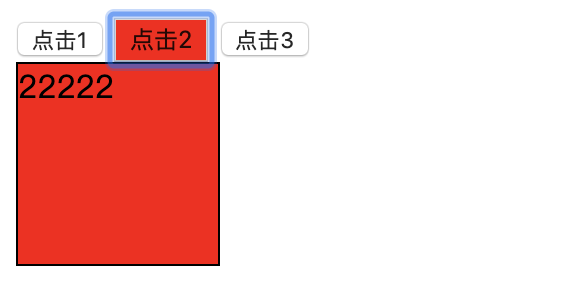Promise的用法
一、什么是Promise?
Promise对象表示一个异步操作的最终状态(成功或失败),主要用于多层回调嵌套或处理多并发请求。
接收两个参数:resolve表示成功,reject表示失败。
new Promise(function(resolve,reject){...})
来看一个例子:
new Promise(function(resolve,reject){
resolve();
reject();
}).then(function(){
console.log('成功!')
},function(){
console.log('失败!')
})
运行结果:成功!
分析一下:如果resolve执行后,执行then里面的第一个函数;如果reject执行后,则执行then里面的第二个函数。
Promise最终只表示一个状态,要么成功,要么失败,一个执行成功,另一个不看。此例中,resolve执行后,reject就不执行了。故只执行第一个函数。相反,如果reject先执行,那么resolve对应的函数就不执行了。
换一种写法再来看下:
new Promise(function(resolve,reject){
resolve();
reject();
}).then(function(){
console.log('成功!')
}).catch(function(){
console.log('失败!')
})
将reject对应的函数写在catch里面是不是更清晰了?
那什么时候该执行resolve(),什么时候该执行reject()呢?先看一个小例子(后面会更详细讲用途)
let flag = false; new Promise(function(resolve,reject){ flag ? resolve() : reject(); }).then(function(){ console.log('成功!') }).catch(function(){
console.log('失败!')
})
运行结果: 失败!
就是当需要根据两种状态(成功或失败)分别写对应的逻辑处理的时候,分别执行resolve和reject。那可能会问,那我为什么不用 if……else直接写呢?
因为Promise的强大还在于可以链式调用,并且可以将返回结果作为参数继续使用,类似多层回调。
new Promise(function(resolve,reject){
resolve([1,2]);
reject();
}).then(function(arr){
let [arg1,arg2] = arr; //这里解构赋值
var result1 = arg1+arg2; //1+2=3
return result1;
}).then(function(result1){
var result2 = ++result1; //4
return result2;
}).then(function(result2){
alert(result2 * 2); //8
}).catch(function(){
console.log('error')
})
运行结果:8
如果throw一个错误,会被catch捕捉,并且catch后也可以链式写then,如下:
new Promise(function(resolve,reject){
resolve([1,2]);
reject();
}).then(function(arr){
let [arg1,arg2] = arr; //这里解构赋值
var result1 = arg1+arg2;
return result1;
}).then(function(result1){
var result2 = ++result1;
return result2;
}).then(function(result2){
throw 'this is a bug';
}).catch(function(v){
console.log(v); //打印this is a bug
return 'abc'
}).then(function(m){
console.log(m); //abc
})
运行结果:

二、Promise的静态方法:
-
Promise.resolve()
-
Promise.reject()
-
Promise.race():接收一个数组为参数,多个Promise,谁快执行谁,无论resolve还是reject。
-
Promise.all():接收一个数组为参数,数组里有一个失败则失败。(用于处理多并发请求)
例子分别如下:
Promise.resolve('hello').then(function(m){
console.log(m);
})
运行结果:hello
Promise.reject('this is error').then(function(){
}).catch(function(err){
console.log(err);
})
运行结果:this is error
Promise.race([new Promise(function(resolve,reject){
setTimeout(resolve,500,'one')
}),new Promise(function(resolve,reject){
setTimeout(resolve,400,'two') //比第一个快
})]).then(function(str){
alert(str); //two
}).catch(function(){
})
运行结果:two,再增加一个reject看下
Promise.race([new Promise(function(resolve,reject){
setTimeout(resolve,500,'one')
}),new Promise(function(resolve,reject){
setTimeout(resolve,400,'two')
}),new Promise(function(resolve,reject){
setTimeout(reject,300,'bug') //最快
})]).then(function(str){
alert(str);
}).catch(function(err){
alert(err); //bug
})
运行结果:bug
Promise.all([Promise.resolve('abc'),1,2]).then(function(m){
alert(m); //abc,1,2
}).catch(function(err){
alert(err);
})
运行结果:abc,1,2 增加一个reject看下
Promise.all([Promise.resolve('abc'),Promise.reject('bug'),1,2]).then(function(m){
alert(m);
}).catch(function(err){
alert(err); //bug
})
运行结果:bug 有一个失败则失败
三、Promise用途例子(帮助更好的理解Promise)
1、控制显隐

<!DOCTYPE html>
<html lang="en">
<head>
<meta charset="UTF-8">
<meta name="viewport" content="width=device-width, initial-scale=1.0">
<meta http-equiv="X-UA-Compatible" content="ie=edge">
<title>Document</title>
<style>
#div1{
width:100px;
height: 100px;
background: #f80;
}
</style>
</head>
<body>
<input type="button" value="点击" id="btn">
<div id="div1"></div>
<script>
var btn = document.getElementById('btn');
var div1 = document.getElementById('div1');
var changeNode = true;
btn.onclick = function(){
show();
}
function show(){
changeNode = !changeNode;
new Promise(function(resolve,reject){
changeNode ? resolve() : reject();
}).then(function(){
div1.style.display = 'block';
}).catch(function(){
div1.style.display = 'none';
})
}
</script>
</body>
</html>
2、选项卡切换
普通方法实现
<!DOCTYPE html>
<html lang="en">
<head>
<meta charset="UTF-8">
<meta name="viewport" content="width=device-width, initial-scale=1.0">
<meta http-equiv="X-UA-Compatible" content="ie=edge">
<title>Document</title>
<style>
div{
display: none;
width:100px;
height: 100px;
border: 1px solid #000;
}
div.active{
display: block;
background: #f00;
}
input.active{
background: #f00;
}
</style>
</head>
<body>
<input type="button" value="点击1" class="active">
<input type="button" value="点击2" >
<input type="button" value="点击3" >
<div class="active">11111</div>
<div>22222</div>
<div>33333</div>
<script>
var btns = document.getElementsByTagName('input');
var aDiv = document.getElementsByTagName('div');
for(let i=0;i<btns.length;i++){
btns[i].onclick = function(){
for(var j=0;j<btns.length;j++){
btns[j].className='';
aDiv[j].className='';
}
this.className = 'active';
aDiv[i].className = 'active';
}
}
</script>
</body>
</html>
效果:

使用Promise实现自动切换
<script> var btns = document.getElementsByTagName('input'); var aDiv = document.getElementsByTagName('div'); var index = 0; setInterval(show,1000); function show(){ index++; return new Promise(function(resolve,reject){ index == btns.length ? reject() : resolve(); }).then(function(){ for(var j=0;j<btns.length;j++){ btns[j].className=''; aDiv[j].className=''; } btns[index].className = 'active'; aDiv[index].className = 'active'; }).catch(function(){ index = -1;
show(); }) } </script>
3、使用Promise写ajax
window.onload = function(){
//调用封装好的ajax
ajax('a.php','get').then(function(res){
console.log(res);
}).catch(function(err){
console.log(err);
})
function ajax(url,method){
return new Promise(function(resolve,reject){
var xhr = new XMLHttpRequest();
xhr.open(url,method,true);
xhr.send(null);
xhr.onload=function(){
if(xhr.status >= 200 && xhr.status<300 || xhr.status==304){
resolve(xhr.responseText);
}else{
reject(xhr.status);
}
}
xhr.onerror=function(){
reject('连接失败!');
}
})
}
}



